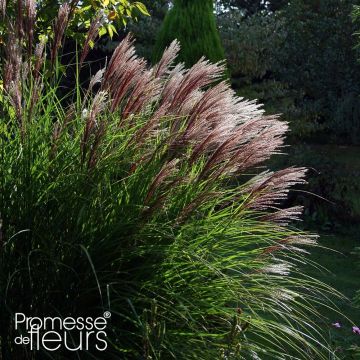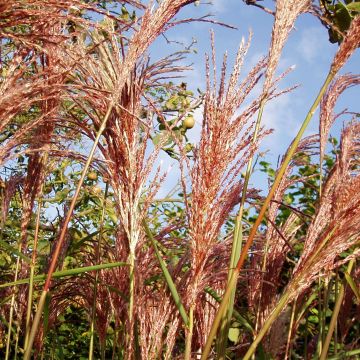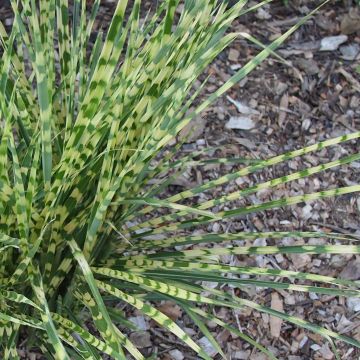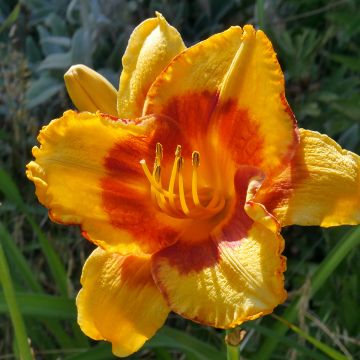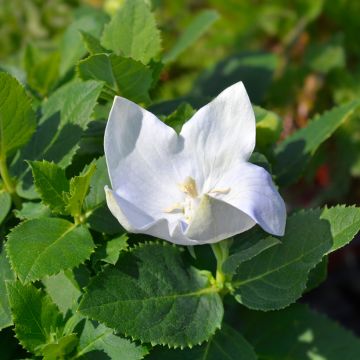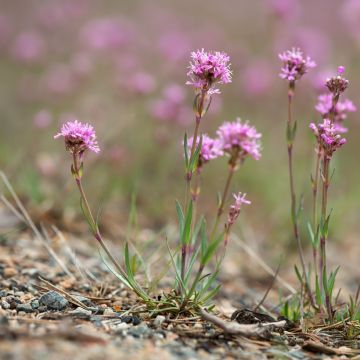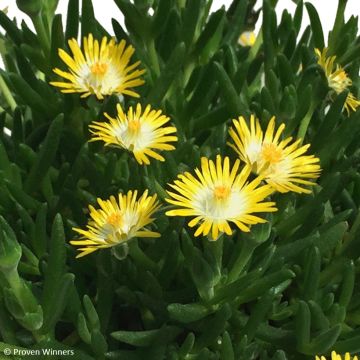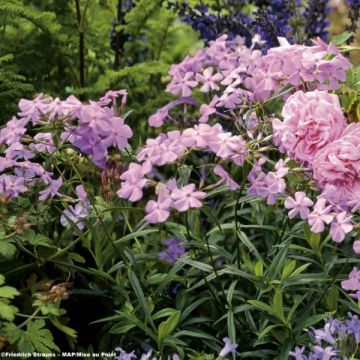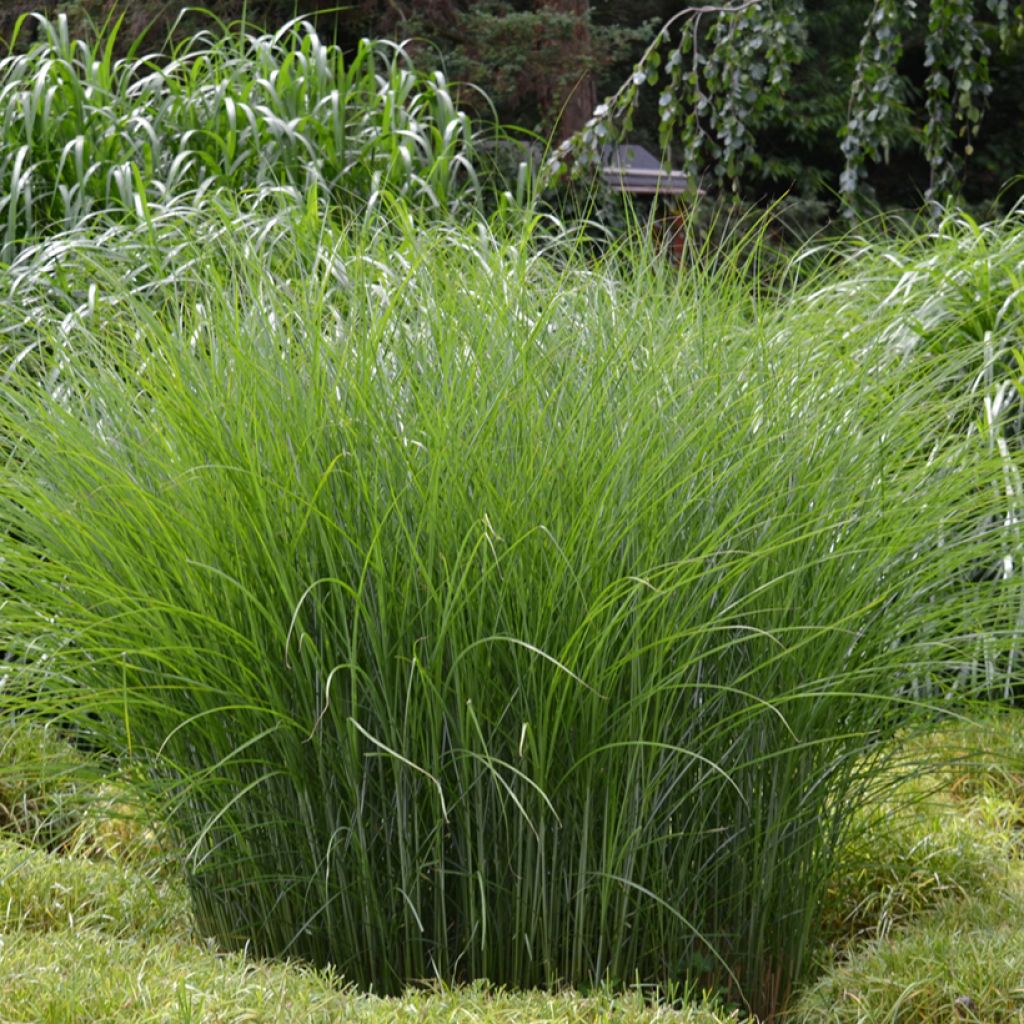

Miscanthus sinensis Gracillimus - Silvergrass
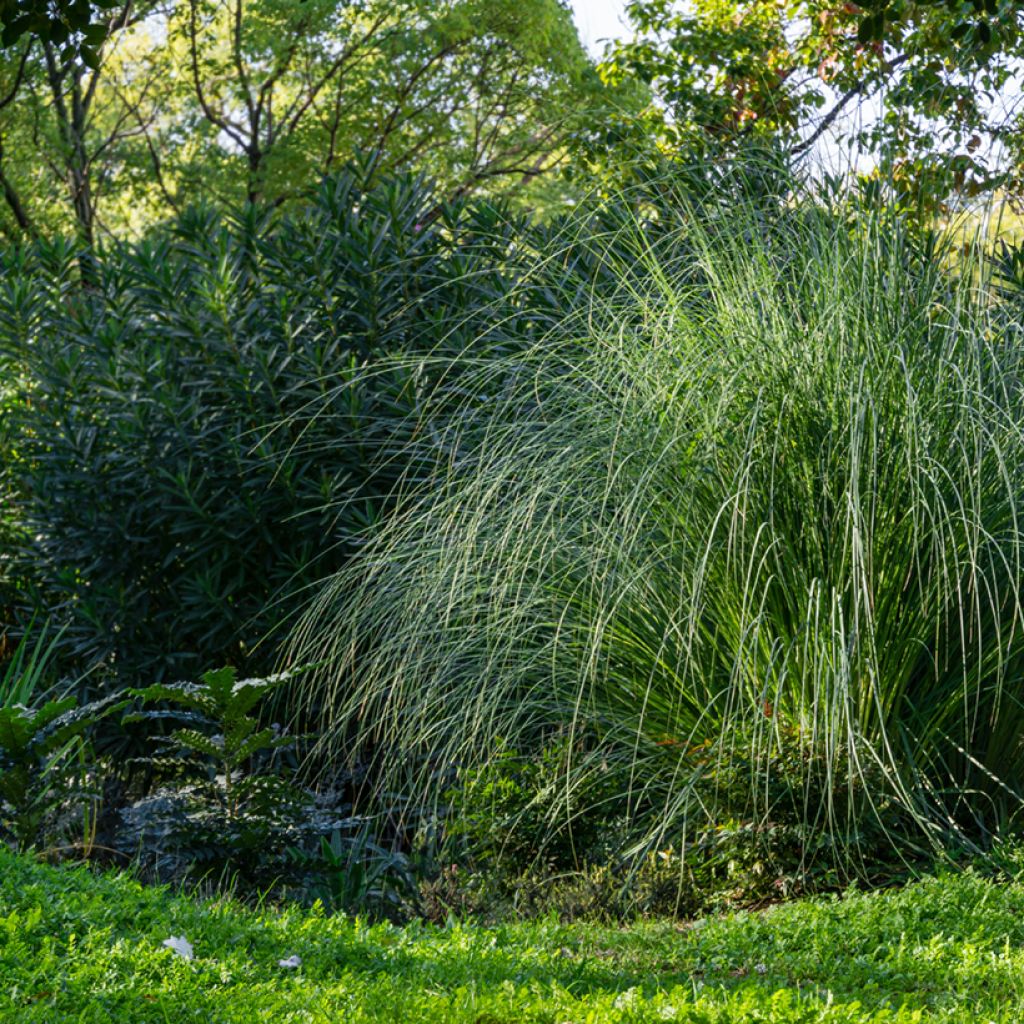

Miscanthus sinensis Gracillimus - Silvergrass
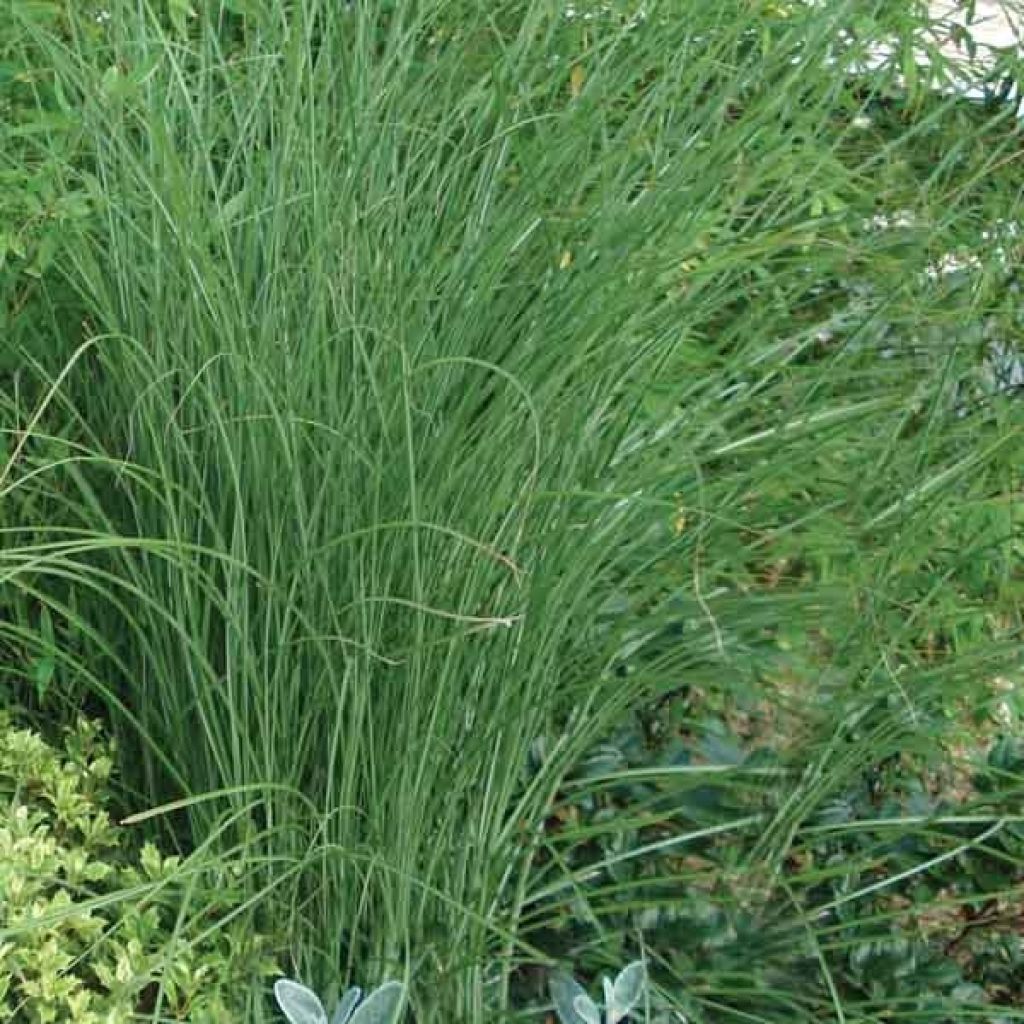

Miscanthus sinensis Gracillimus - Silvergrass
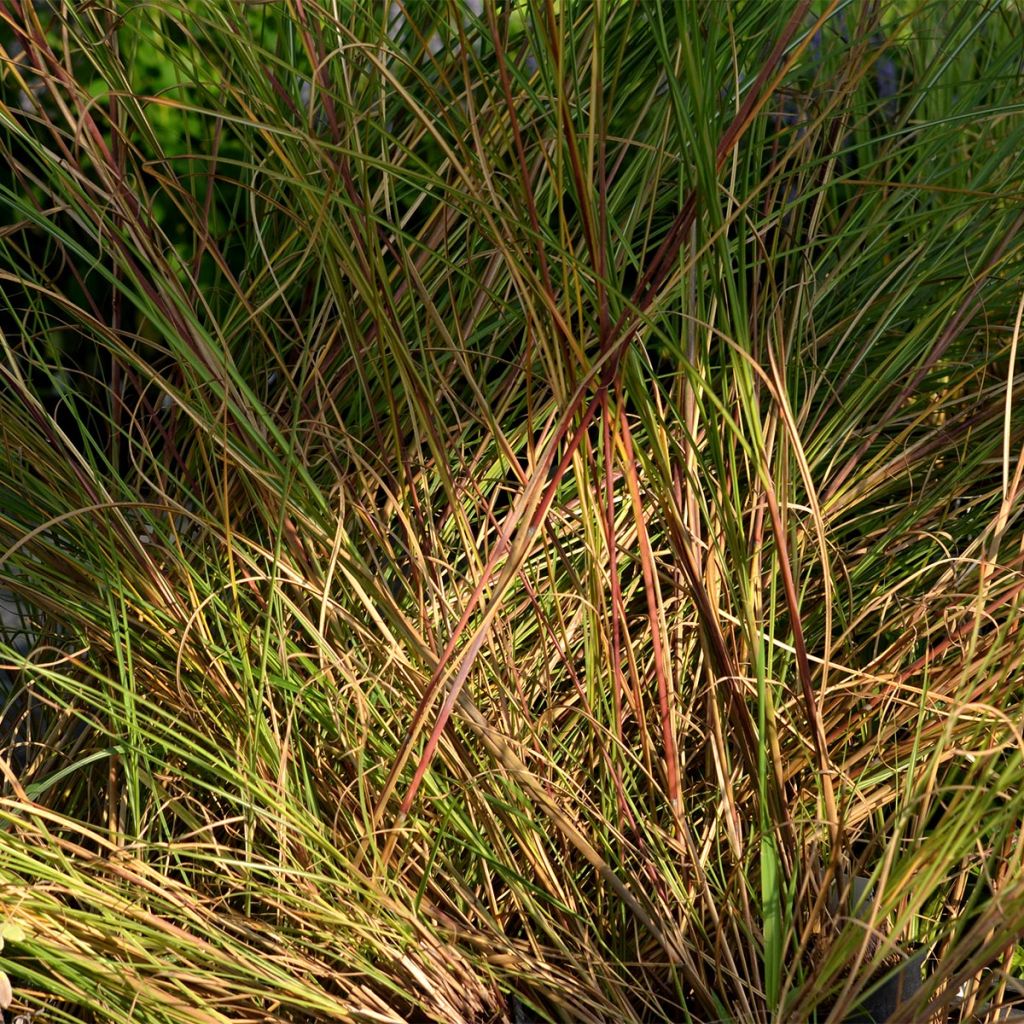

Miscanthus sinensis Gracillimus - Silvergrass
Miscanthus sinensis Gracillimus - Silvergrass
Miscanthus sinensis Gracillimus
Eulalia, Porcupine Grass, Chinese silver Grass, Maiden Grass, Zebra Grass, Susuki Grass
Why not try an alternative variety in stock?
View all →This plant carries a 12 months recovery warranty
More information
We guarantee the quality of our plants for a full growing cycle, and will replace at our expense any plant that fails to recover under normal climatic and planting conditions.
From €5.90 for pickup delivery and €6.90 for home delivery
Express home delivery from €8.90.
From €5.90 for pickup delivery and €6.90 for home delivery
Express home delivery from €8.90.

Does this plant fit my garden?
Set up your Plantfit profile →
Description
The Miscanthus sinensis 'Gracillimus' is one of the most well-known varieties of Maiden Grass or Chinese Silver Grass. This tall perennial grass, with rapid growth, forms a rounded and dense clump, slightly arched at the top, composed of numerous very fine leaves that are a beautiful spring green, giving the plant its appeal. The flowering of this variety, late in the season, takes the form of feathery plumes in a coppery red color. In autumn, the leaves turn a lovely caramel to bronze color and curl up.
The 'Gracillumus' Chinese Silver Grass belongs to the family of poaceae. It is a horticultural selection derived from Miscanthus sinensis, native to East Asia and Oceania. This tall perennial grass with short rhizomes grows in a non-trailing clump, it is tufted and non-invasive. The habit is both erect and slightly drooping, reaching a height of about 2m (7ft) when in flower, 1.30m (4ft) for the foliage, with a spread of 60-70cm (24-28in). The leaves are particularly thin, ribbon-like, very long (1 to 2m (3 to 7ft)), flexible, with a white midrib. Their color is initially bright green, then caramel in autumn, and finally bronze. Numerous flowering stems emerge well above the foliage between late September and October, in the form of silky, finger-like plumes measuring 20 to 30cm (8 to 12in) in length, purplish to coppery. As they fade, they quickly take on a silvery, then golden hue. The plumes consist of tiny flowers that close up shortly after, only to open again when ripe. They then take on a paler and more downy appearance. However, the Miscanthus sinensis 'Gracillimus' rarely flowers, depending on the climate. It is primarily a decorative plant for its foliage. It has excellent hardiness, tolerating temperatures as low as -20°C (1°F).
The Miscanthus sinensis 'Gracillimus' can be placed both as a specimen plant and in groups in perennial beds, borders, and flower beds. This Chinese Silver Grass can make a lovely low hedge and forms a good ground cover. It can even be found at the edge of ponds. It is an ideal grass for gravel gardens and meadows. Its foliage as well as its floral plumes are interesting for creating beautiful dried bouquets. In Japanese culture, Miscanthus is the symbol of autumn. Some ideas for pairing it in the garden: the Feather Reed Grass, Pennisetum National Arboretum, Switch Grass Rotstrahlbusch. And also the entire range of Miscanthus.
Report an error about the product description
Miscanthus sinensis Gracillimus - Silvergrass in pictures
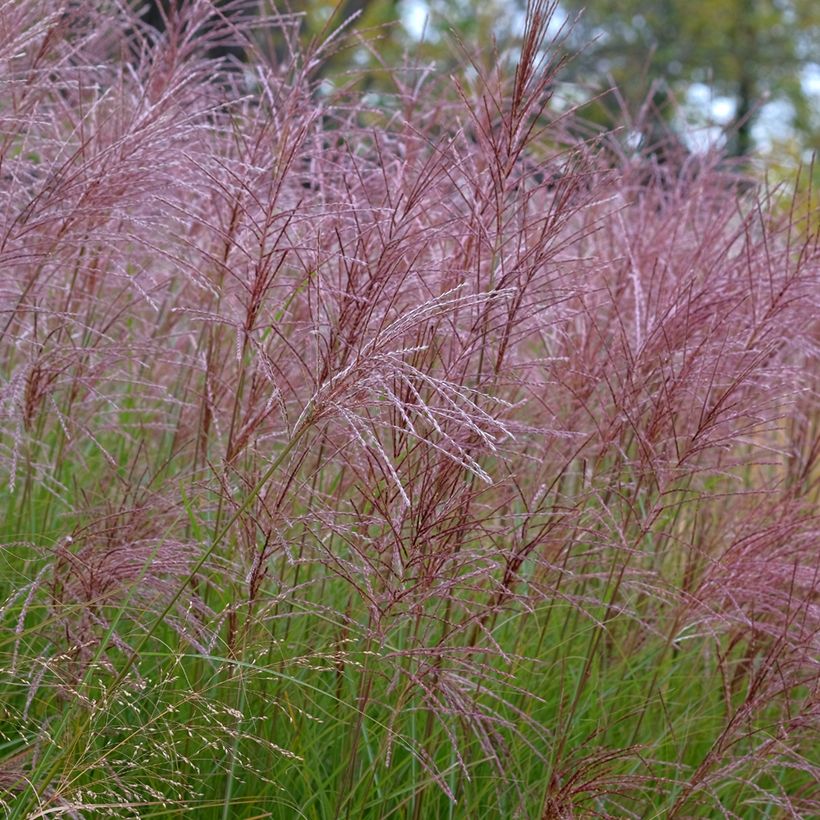

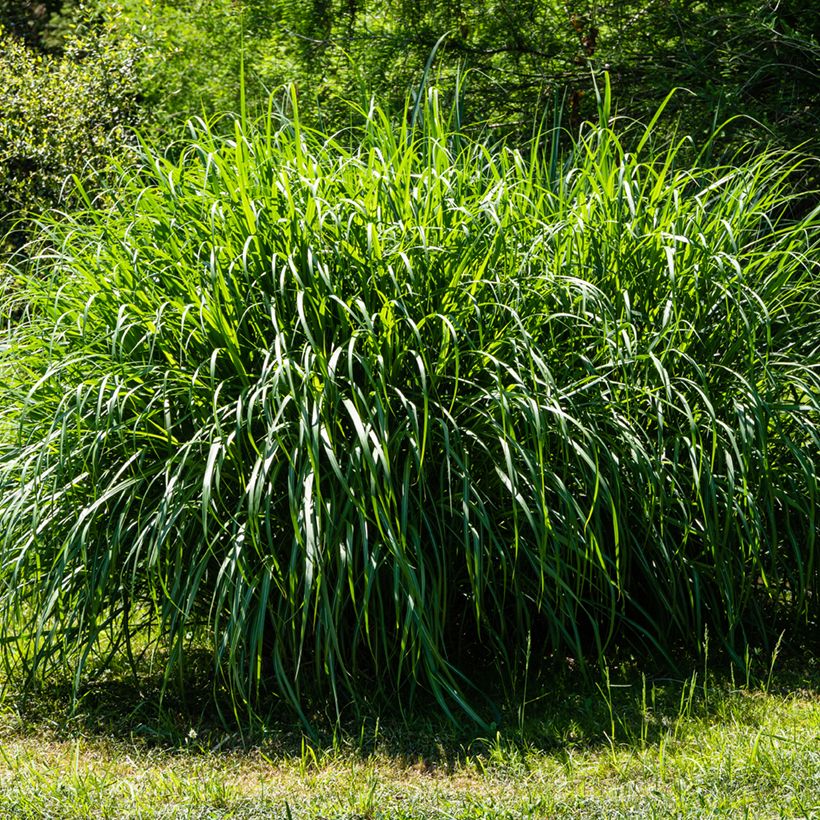

Flowering
Foliage
Plant habit
Botanical data
Miscanthus
sinensis
Gracillimus
Poaceae
Eulalia, Porcupine Grass, Chinese silver Grass, Maiden Grass, Zebra Grass, Susuki Grass
Cultivar or hybrid
Other Miscanthus
Planting and care
The Miscanthus sinensis 'Gracillimus' appreciates good sunlight. It withstands moderate drought, but prefers soil that remains slightly moist in summer. Place it in fairly rich, well-drained soil. Protect it from excessive winter moisture, as it cannot tolerate stagnant water. Water generously after planting. Then, provide regular watering during the first year. Miscanthus is a demanding plant. It requires regular fertilizer application. In late winter (March to April), cut the plant back to ground level before new leaves appear to maintain a compact habit. It produces new leaves as early as April. Beware of the sharp leaves. It is a disease-resistant plant. Only a few rodents can disturb it.
Planting period
Intended location
Care
-
, onOrder confirmed
Reply from on Promesse de fleurs
Summer flowering perennials
Haven't found what you were looking for?
Hardiness is the lowest winter temperature a plant can endure without suffering serious damage or even dying. However, hardiness is affected by location (a sheltered area, such as a patio), protection (winter cover) and soil type (hardiness is improved by well-drained soil).

Photo Sharing Terms & Conditions
In order to encourage gardeners to interact and share their experiences, Promesse de fleurs offers various media enabling content to be uploaded onto its Site - in particular via the ‘Photo sharing’ module.
The User agrees to refrain from:
- Posting any content that is illegal, prejudicial, insulting, racist, inciteful to hatred, revisionist, contrary to public decency, that infringes on privacy or on the privacy rights of third parties, in particular the publicity rights of persons and goods, intellectual property rights, or the right to privacy.
- Submitting content on behalf of a third party;
- Impersonate the identity of a third party and/or publish any personal information about a third party;
In general, the User undertakes to refrain from any unethical behaviour.
All Content (in particular text, comments, files, images, photos, videos, creative works, etc.), which may be subject to property or intellectual property rights, image or other private rights, shall remain the property of the User, subject to the limited rights granted by the terms of the licence granted by Promesse de fleurs as stated below. Users are at liberty to publish or not to publish such Content on the Site, notably via the ‘Photo Sharing’ facility, and accept that this Content shall be made public and freely accessible, notably on the Internet.
Users further acknowledge, undertake to have ,and guarantee that they hold all necessary rights and permissions to publish such material on the Site, in particular with regard to the legislation in force pertaining to any privacy, property, intellectual property, image, or contractual rights, or rights of any other nature. By publishing such Content on the Site, Users acknowledge accepting full liability as publishers of the Content within the meaning of the law, and grant Promesse de fleurs, free of charge, an inclusive, worldwide licence for the said Content for the entire duration of its publication, including all reproduction, representation, up/downloading, displaying, performing, transmission, and storage rights.
Users also grant permission for their name to be linked to the Content and accept that this link may not always be made available.
By engaging in posting material, Users consent to their Content becoming automatically accessible on the Internet, in particular on other sites and/or blogs and/or web pages of the Promesse de fleurs site, including in particular social pages and the Promesse de fleurs catalogue.
Users may secure the removal of entrusted content free of charge by issuing a simple request via our contact form.
The flowering period indicated on our website applies to countries and regions located in USDA zone 8 (France, the United Kingdom, Ireland, the Netherlands, etc.)
It will vary according to where you live:
- In zones 9 to 10 (Italy, Spain, Greece, etc.), flowering will occur about 2 to 4 weeks earlier.
- In zones 6 to 7 (Germany, Poland, Slovenia, and lower mountainous regions), flowering will be delayed by 2 to 3 weeks.
- In zone 5 (Central Europe, Scandinavia), blooming will be delayed by 3 to 5 weeks.
In temperate climates, pruning of spring-flowering shrubs (forsythia, spireas, etc.) should be done just after flowering.
Pruning of summer-flowering shrubs (Indian Lilac, Perovskia, etc.) can be done in winter or spring.
In cold regions as well as with frost-sensitive plants, avoid pruning too early when severe frosts may still occur.
The planting period indicated on our website applies to countries and regions located in USDA zone 8 (France, United Kingdom, Ireland, Netherlands).
It will vary according to where you live:
- In Mediterranean zones (Marseille, Madrid, Milan, etc.), autumn and winter are the best planting periods.
- In continental zones (Strasbourg, Munich, Vienna, etc.), delay planting by 2 to 3 weeks in spring and bring it forward by 2 to 4 weeks in autumn.
- In mountainous regions (the Alps, Pyrenees, Carpathians, etc.), it is best to plant in late spring (May-June) or late summer (August-September).
The harvesting period indicated on our website applies to countries and regions in USDA zone 8 (France, England, Ireland, the Netherlands).
In colder areas (Scandinavia, Poland, Austria...) fruit and vegetable harvests are likely to be delayed by 3-4 weeks.
In warmer areas (Italy, Spain, Greece, etc.), harvesting will probably take place earlier, depending on weather conditions.
The sowing periods indicated on our website apply to countries and regions within USDA Zone 8 (France, UK, Ireland, Netherlands).
In colder areas (Scandinavia, Poland, Austria...), delay any outdoor sowing by 3-4 weeks, or sow under glass.
In warmer climes (Italy, Spain, Greece, etc.), bring outdoor sowing forward by a few weeks.



































